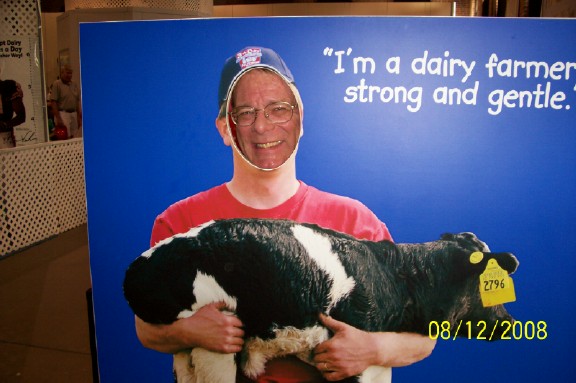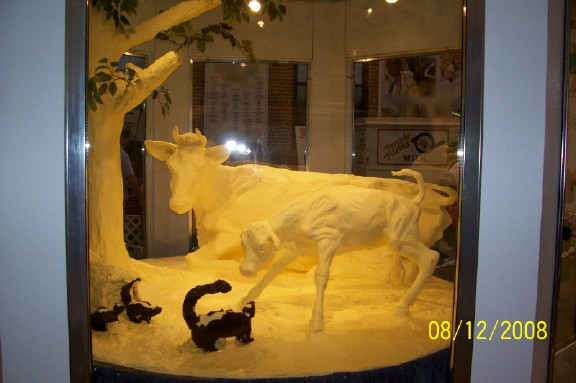I skipped over the rest of the electronic world for a number of reasons when I was talking about the residential market in this blog partly because it is not a huge savings for my 2 person adult household. So let me say this right up front that this post is kinda about people who leave the lights on. You know who you are and people under 21 who don’t give a shit. A quick caution here, if you unplug your stuff when you are not using it you will have to reprogram it! Still, people travel and if you are leaving your place even for a couple of days, unplugging your stuff is a very good idea. We have been stuck on stupid in this country for 30 years, thanks to Richard Nixon, Ronald Reagan and George Bushes. So it’s time to get smart.
Besides, this article was sent to me by our Website Genius and so who am I to anger the Gods.
http://www.nytimes.com/2008/08/06/technology/06green.html?_r=2&oref=slogin&oref=slogin
An Energy Diet for Power-Hungry Household PCs
Published: August 6, 2008
In its drive to go green, the technology industry has so far focused mainly on big targets like corporations and especially computer data centers, the power-hungry computing engine rooms of the Internet economy.
Next come the hundreds of millions of desktop and laptop personal computers in households worldwide.
Microsoft, the nonprofit Climate Savers Computing Initiative and a start-up called Verdiem are combining to put a spotlight on the energy-saving opportunity in PCs, and distributing a free software tool to consumers to help them do it.
The potential savings in both dollars and pollution is huge, analysts say, when the estimated one billion PCs in use globally are taken into account. The research firm Gartner estimates that 40 percent of all carbon dioxide emissions resulting from information technology and telecommunications are attributable to PCs. Data center computers account for 23 percent, and the rest is attributable to printers and telecommunications equipment.
“If you are going to tackle climate change and curb energy use, you have to deal with consumer devices like PCs,” said Andrew Fanara, a product development expert in the Environmental Protection Agency’s Energy Star program, which promotes energy-efficient products and practices.
For more than a decade, the federal Energy Star program has developed voluntary power-management standards for PCs, and suppliers like Intel and Microsoft have steadily improved the energy efficiency of their chips and software. But Mr. Fanara estimated that less than half of PCs met those standards, in part because more energy-efficient hardware adds slightly to production costs.
“There are large potential savings beyond what Energy Star can do,” he said.
The free software, called Edison, is a consumer version of the PC energy-saving software sold to corporate customers by Verdiem, which is financed by Kleiner Perkins Caufield & Byers, a leading venture capital firm and an aggressive investor in green technologies, and other venture investors.
Verdiem, based in Seattle, has 180 corporate and government customers, including Hewlett-Packard, which bundles Verdiem’s Surveyor program on its desktop PCs sold to corporations. Though he will not disclose sales figures, the company’s chief executive, Kevin Klustner, says revenue should triple this year.
There are other free tools for calculating and managing PC power consumption, including the E.P.A.’s EZ Wizard, CO2 Saver and a Google energy-saving gadget. But Edison allows the user more flexibility, especially in making the settings as stringent as they want, analysts say.
If a user sets the software to put the machine in a “deep sleep” mode after a few minutes of not hitting a keystroke, the hard drive powers down and the PC sips just 5 percent of its normal energy consumption.
That kind of energy diet is far from standard practice in homes and offices. Half of all electricity consumed by a standard PC is wasted, according to environmental and industry studies.
Household electricity bills could also be trimmed by $20 to $95 a year for each PC, depending on local power costs and the kind of PCs in use, said Mr. Klustner. “What we’re trying to do is raise the visibility of the power consumption problem on the PC desktop and really bring power management to the masses,” he said.
The Climate Savers group, which includes major technology companies and environmental groups, has set a goal of reducing carbon dioxide emissions from computers by 54 million tons by 2010. That is the equivalent of the yearly pollution from 11 million cars. The goal includes data center computers and PCs, and about half of all PCs are consumer machines.
“This kind of energy-saving technology for consumers is a key ingredient in moving toward that goal,” said Rob Bernard, chief environmental strategist for Microsoft.
The companies said that the Edison software would be available to download on Wednesday from the Web sites of Verdiem (verdiem.com), Microsoft (microsoft.com/environment), and Climate Savers (climatesaverscomputing.org).
:}
Here is aceeeeeeeeeeeee oh sorry why can’t they shorten it to ACE cubed or something?:
http://www.aceee.org/consumerguide/electronics.htm
Consumer Guide to Home Energy Savings: Condensed Online Version
Home Electronics
The energy use of electronic equipment often goes unnoticed. But as it turns out, an estimated 10% to 15% of all electricity used in American homes can be attributed to the buzz of electronic devices. The vast majority is consumed by home entertainment systems and home office equipment. But small energy users, including portable devices with battery chargers, make up a significant share—not because they use a lot of energy individually, but because of their sheer numbers.
| Understanding Power Modes |
To minimize the energy used by home electronics, it is helpful to understand the true meaning of “on” and “off” as applied to electronics. It’s rarely that simple! Unlike a light switch that turns a lamp or fixture on or off, many electronics products operate in two, three, or even four modes, and even continue to draw power when apparently turned off.
| Mode |
Definition |
Examples |
Active
(In-Use) |
Appliance is performing its primary function. |
TV displays picture and/or sound.
VCR records or plays back tape.
Printer prints document. |
| Active standby |
Appliance ready for use, but not performing primary function.
Appears on to consumer. |
DVD player on but not playing.
Cordless appliance charging. |
| Passive standby |
Appliance is off/standby.
Appears off to consumer, but can be activated by remote control OR is performing peripheral function. |
Microwave not in use, but clock is on.
CD player off, but can be turned on with remote control. |
| Off |
Applicance is turned off and no function is being performed.Consumer cannot activatewith remote control. |
Computer speakers are off,
but plugged in.
TV is not functioning and cannot be turned on with remote. |
Below is a table of common electronic equipment and the average energy used in each mode and per year (in order from most energy-intensive to least)
| Product |
Passive Standby or Off (watts)
|
Active Standby
(watts)
|
Active
(watts)
|
Average Annual Energy Use (kWh)
|
| Home Entertainment |
| Plasma TV (<40″) |
3
|
–
|
246
|
441
|
| DVR/TiVo |
37
|
37
|
37
|
363
|
| Digital Cable |
26
|
26
|
26
|
239
|
| Satellite Cable |
12
|
11
|
16
|
124
|
| CRT TV (<40″) |
1
|
–
|
73
|
123
|
| LCD TV (<40″) |
3
|
–
|
70
|
77
|
| Video Game Console |
1
|
–
|
24
|
16
|
| DVD |
1
|
5
|
11
|
13
|
| Home Office |
| Desktop Computer |
4
|
17
|
68
|
255
|
| Laptop Computer |
1
|
3
|
22
|
83
|
| CRT Monitor |
2
|
3
|
70
|
82
|
| LCD Monitor |
1
|
2
|
27
|
70
|
| Computer Speakers |
2
|
–
|
7
|
20
|
| Modem |
5
|
–
|
6
|
50
|
| Wireless Router |
2
|
–
|
6
|
48
|
| USB Hub |
1
|
–
|
3
|
18
|
| Printer |
2
|
3
|
9
|
15
|
| Fax |
4
|
4
|
4
|
26
|
| Mutli-Function Printer/Scanner/Copier |
6
|
9
|
15
|
55
|
| Rechargeable Devices |
| Power Tool |
4
|
–
|
34
|
37
|
| Hand-Held Vacuum |
3
|
–
|
3
|
29
|
| Cordless Phone |
2
|
3
|
5
|
26
|
| Electric Toothbrush |
2
|
–
|
4
|
14
|
| Shaver |
1
|
–
|
1
|
11
|
| MP3 Player |
1
|
–
|
1
|
6
|
| Cell Phone |
0
|
1
|
3
|
3
|
| Digital Camera |
0
|
–
|
2
|
3
|
Source: ECOS Consulting, 2006: Final Field Research Report for the California Energy Commission
Top
There are several steps you can take now to minimize the energy used by the electronics in your home:
- Unplug It. The simplest and most obvious way to eliminate power losses is to unplug products when not in use. Search the wall sockets in your house for hidden un-connected chargers and other devices that don’t need to be plugged in. When you detach your cell phone or similar device from its charger, unplug the charger too.
- Use a Power Strip. Plug home electronics and office equipment into a single power strip with an on/off switch. This will allow you to turn off all power to the devices in one easy step. But remember to keep your power strip in an easy-to-reach location! Once the power strip is turned off, no power will be delivered to the outlets, thereby eliminating power wasted by power supplies. One caveat: home entertainment equipment such as TVs, cable and satellite boxes, and DVRs will need to be reprogrammed or given time to reboot and download information when turned back on. You may want to plug these devices into a separate strip and only turn them off when you plan to be away for more than a few days.
-
Use a Power Meter. Use a power meter to find your leading sources of energy consumption to help you to prioritize which products to unplug or to replace. Plug these devices in between a given appliance and the wall socket to see how much electricity it is using. Two models to look for are the Kill A Watt™ and the Watts Up? Pro Power Meter. For an even more sophisticated, big-picture look at your home’s real-time electricity use, you might also consider purchasing a power use monitor. These devices are programmed to read information from your electric meter and communicate the real-time changes in use through an easy-to-read screen. Some good monitors to look for are The Energy Detective (TED), the Power Cost Monitor, and the Cent-A-Meter.
Top
Home Entertainment Equipment
- Look for the ENERGY STAR when purchasing a new TV, DVD Player, VCR, audio system, or digital-to-analog converter box. The ENERGY STAR label ensures low standby power use for these appliances — in most cases only 1 watt or less.
- As of January, 2008, the ENERGY STAR label for TVs will indicate low active-mode power use as well (when the TV is actually on). Under 40 inches, choose a TV with an LCD screen. The average plasma TV uses more energy per year than a modern refrigerator. We do not recommend purchasing any TV with a screen greater than 40 inches at this time.
- About DTAs and the Switch to Digital Broadcasting
As of February, 2009, the U.S. will shift to digital-only TV broadcasts (to learn more, go here). Consumers who do not subscribe to cable or satellite services will need a digital TV converter box (DTA) to view programming on their analog TVs.These boxes should become widely available on the market by mid- to late-2008. If you have purchased a digital TV, you will not need a DTA for that TV set.
Simple DTAs are expected to cost around $50.The National Telecommunications and Information Administration will offer consumers coupons to offset the cost of DTAs. Each household is eligible for two $40 coupons. DTAs eligible for the coupon program must meet energy efficiency specifications including a maximum standby power level and automatic power down after 4 hours of inactivity.Additional ENERGY STAR requirements set maximum active power levels for DTAs.To minimize your energy use, look for ENERGY STAR-labeled DTAs if you need to purchase one for your home.
Computers and Home Office Equipment
- Look for the ENERGY STAR label on any new PCs, printers, faxes, and copiers. Current specifications set maximum power levels for sleep mode power consumption (and, in the case of monitors, active mode power) as well as requirements for power management features.
External Power Supplies
-
Electronic products run on low-voltage direct current (DC) and therefore require power supplies to transform the 120-volt alternating current (AC) supplied at the power outlet. Some larger products, like TVs, stereos and set-top boxes, incorporate the power supply into the body of the product. Others use external power supplies, the familiar “wall packs” that increasingly compete for space in our outlets and power strips. These power supplies consume electricity as long as they are connected to a power outlet, whether or not the product is on or off, and even if it is disconnected! You’ll know a wall pack is using energy when it has been plugged in for a while and it is warm to the touch.
- A number of manufacturers now offer high-efficiency power supplies (typically “switch-mode” power supplies) and a growing number of products are sold with these improved devices. The best of these devices boast efficiency levels of more than 90%, whereas the worst performers are only 20-40% efficient (meaning they waste more than half of the electricity that passes through them!).
-
High efficiency power supplies are much smaller and lighter than the wall-pack power supplies they replace, saving room under your desk and in your briefcase. ENERGY STAR-qualified power supplies are now available and are being sold with a growing number of electronics products. For more information, check out EfficientPowerSupplies
:}
So When You Leave The Dorm Room! To go home and stay with Mommy and Daddy for Christmas, Thanksgiving or Easter unplug your stuff! When you go to Cancun for vacation or to participate in a girls gone wild film shoot. UnPlUg YouR sTuFf!
:}







 Earth Day: Save Money and Solve Global Warming Green Your World Victory for the Grand Canyon “Green” Nobel Prize Winner Introducing Green Works
Earth Day: Save Money and Solve Global Warming Green Your World Victory for the Grand Canyon “Green” Nobel Prize Winner Introducing Green Works This
This  You can have an even bigger impact when you help your office, local hospital, schools, or place of worship make better use of efficiency and renewables. You don’t have to reinvent the wheel!We’ve got
You can have an even bigger impact when you help your office, local hospital, schools, or place of worship make better use of efficiency and renewables. You don’t have to reinvent the wheel!We’ve got 
 On April 4, a federal judge issued a restraining order against a mining company and the Kaibab National Forest,
On April 4, a federal judge issued a restraining order against a mining company and the Kaibab National Forest, 
 Puerto Rican grandmother and homemaker Rosa Hilda Ramos has been awarded this year’s prestigious Goldman Environmental Prize, often called “the green Nobel.” In the shadow of polluting factories in Catano, a city across the bay from San Juan, Ramos led her community to successfully defeat a major polluter in court.She then helped direct the funds from the pollution fine to the permanent protection of Las Cucharillas Marsh, one of the last open spaces in the area and one of the largest wetlands ecosystems in the region. Ramos was nominated by the Sierra Club.
Puerto Rican grandmother and homemaker Rosa Hilda Ramos has been awarded this year’s prestigious Goldman Environmental Prize, often called “the green Nobel.” In the shadow of polluting factories in Catano, a city across the bay from San Juan, Ramos led her community to successfully defeat a major polluter in court.She then helped direct the funds from the pollution fine to the permanent protection of Las Cucharillas Marsh, one of the last open spaces in the area and one of the largest wetlands ecosystems in the region. Ramos was nominated by the Sierra Club.  The Sierra Club would like to introduce Green Works, a breakthrough line of natural cleaning products that work as well as traditional cleaners without the harsh chemical fumes or residue. Made from plant- and mineral-based ingredients, Green Works products are a practical way for consumers to live a greener lifestyle without compromising performance.Learn more about Green Works and
The Sierra Club would like to introduce Green Works, a breakthrough line of natural cleaning products that work as well as traditional cleaners without the harsh chemical fumes or residue. Made from plant- and mineral-based ingredients, Green Works products are a practical way for consumers to live a greener lifestyle without compromising performance.Learn more about Green Works and 






